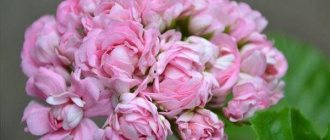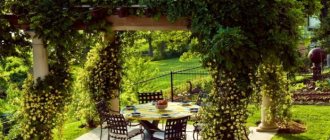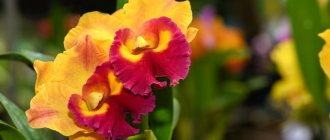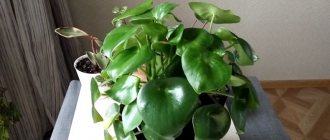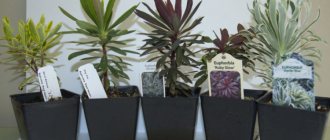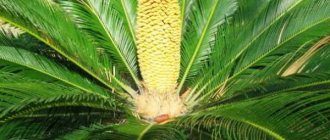Incarvillea, or garden gloxinia, is a guest from the Middle Kingdom. It was there that botanist and plant collector Pierre Nicole d'Incarville first saw and described it. The scientific community assigned the name of the researcher to a beautiful herbaceous perennial. In the wild, this plant of the Bignoniaceae family is found not only in China, but also in the Himalayas, Central and East Asia.
Just a few years ago, garden gloxinia was not very popular among landscape designers and was rarely used in creating flower arrangements in garden plots. Now incarvillea, thanks to its endurance and beauty, is gradually regaining its position. It adapts perfectly to different climatic conditions and is very responsive to proper care. Thanks to a few simple techniques, it is easy to get long-lasting blooms of beautiful flowers in delicate pastel colors.
Description of Incarvillea
Incarvillea is a herbaceous perennial plant. Depending on climatic conditions, garden gloxinia can also be grown as an annual or biennial crop. Its height, depending on the variety, varies from 30-40 cm to 2 meters.
Incarvillea blooms in June-July, delighting with its bright red, pink, yellow, lilac or white flowers. Tubular flowers with a diameter of 6 cm are collected at the tops of peduncles in a brush, where each of them bends outward in the form of a five-petal corolla. At the end of flowering, fruits are formed in the form of a polygonal box with winged seeds.
Large wrinkled velvety leaves cover the base of incarvillea in the form of a basal rosette. They have an oval, pinnately divided shape, with a slightly grayish or purple tint. Some varieties of incarvillea have leaves that resemble ferns in structure.
The root of garden gloxinia looks like a large carrot with fleshy branches.
Types and varieties of incarvillea
The most decorative are perennial varieties of incarvillea, although annuals are more unpretentious and easy to grow.
Incarvillea delawaya
Incarvillea delawaya is a tall perennial plant reaching 1 meter in height. Its large leaves are feathery in shape, reaching 30 cm. The diameter of pink flowers of all shades from dark to light is 6 cm, they appear in June.
Incarvillea Snowtop
Incarvillea Snowtop - has similar characteristics. The only difference is this incarvillea with white flowers.
Incarvillea Myra
Incarvillea Myra is a short plant with red-pink flowers that have white spots inside the corolla.
Incarvillea Olga
Incarvillea Olga - plant height 1.5 m, medium-sized pink flowers collected in loose clusters, blooms for more than 1.5 months.
Incarvillea chinensis
Incarvillea chinensis is a low (up to 30 cm) wild perennial with creamy yellow flowers and pinnately carved light green leaves. Blooms before frost.
Problems in growing
Incarvillea often suffers from illnesses and pest infestations. It is very important to systematically inspect the bushes in order to identify the problem in a timely manner. Quite often, decorative culture suffers from:
- Powdery mildew, in which the foliage of plants is deformed, red-brown spots and a white cobwebby coating appear on the green mass. When a mosaic color forms, the leaf blades begin to die.
- Black spot, which can be identified by black spots on the foliage, the diameter of which can reach 10-15 mm. The spots gradually merge with each other, and the leaf blades die off.
- Gray rot. The stems begin to turn brown against the background of the disease. A fluffy, smoky coating forms on them. If measures are not taken, the plant will soon die.
Incarvillea delavayi
To cope with diseases, experienced flower growers recommend in a timely manner:
- remove fallen leaves;
- prune affected shoots;
- treat decorative plantings with special means.
The most effective drugs that help cope with ailments in a short period of time are considered to be drugs of the following type:
- Topaz;
- Thanos;
- Vectra;
- Gamaira;
Note! You can also treat incarvillea with iodine milk and tincture of ash.
In addition to the listed diseases, when growing ornamental crops, problems such as:
- yellowing of foliage, indicating improper care of the plant;
- browning of foliage that occurs against the background of systematic waterlogging of the soil;
- rotting of the root system, indicating an incorrect watering regime.
Incarvillea is often attacked by spider mites, mealybugs and aphids. To cope with pests, it is enough to carry out treatment using insecticidal preparations.
Incarvillea can become a real decoration of any garden plot. Gorgeous flowers will fit perfectly into any landscape design. Compositions of ornamental crops planted near catnip, Snowtop incarvillea, Chinese incarvillea (White Swan) and hydrangea look especially good.
Growing incarvillea from seeds
This method of propagating garden gloxinia is the most common because it is accessible even to novice gardeners. Growing incarvillea from seeds begins with their stratification. Although they have a high germination rate, such preparation will increase it even more. Cold stratification is carried out for 2 weeks at a temperature of +2+5°C.
Sowing
For sowing, you need to prepare a shallow box with a fertile mixture. Growing incarvillea from seeds begins in March. Planting material is buried 1 cm, sprinkled with pre-calcined river sand on top. After watering, the seedling box is covered with film and placed in a room with a temperature of +18+20°C.
You can sow seeds directly into the soil of the flower garden. But using this method in hot climates is not always justified. If watering is not regular, tender seedlings may die.
Seedling care
The soil should be kept moist at all times until germination. The first green “loops” of seedlings will appear in a week. It is not advisable to pick tender seedlings, although it is possible with sufficient experience. It is better to sow them in advance in peat pots, in which young plants are planted directly into the ground when stable warm weather sets in. In this case, the optimal sowing depth is 1 cm.
When picking, seedlings are buried into the soil up to their cotyledon leaves. To prevent blackleg disease, sprinkle the soil around the incarvillea with crushed coal or ash. Caring for seedlings means keeping the soil moist and hardening off the plants.
To do this, when the temperature rises, the pots with seedlings are exposed to fresh air in partial shade, gradually increasing the time spent outside.
Do not expect abundant flowering immediately after sowing. In both cases, the first incarvillea buds will appear only in the second or third year.
Conditions for growing incarvillea plants
Even proper planting and careful care will not give results if you do not create the necessary conditions for garden gloxinia.
Place on site
To prevent stagnation of water around the incarvillea, when planting, choose an area with a slight elevation. It is better if it is a hillock or hillside. This perennial is responsive to good lighting, so an open area is chosen for its placement. In this case, it is necessary to provide for the possibility of shading the flower garden with garden gloxinia in the afternoon.
The soil
If the soil for planting incarvillea is not light and breathable enough, it needs to be improved. Digging and adding compost and sand will optimally prepare the soil for planting.
To do this, prepare planting pits filled with a nutrient mixture containing:
- leaf humus;
- coarse river sand;
- peat;
- 20-25 g of complex mineral fertilizers.
If the soil is acidic, you can add a handful of ash. All components are mixed as evenly as possible. It is unacceptable to introduce fresh mullein into the planting hole.
Does it hibernate or not?
This is perhaps the main question that arises when considering the purchase of another foreign garden diva. The answer will disappoint you: yes and no. As always happens, it all depends on the climate zone and microclimate of the site. Almost all types of incarvilles grown here (I. Delaveya, I. Mayra and some others) are declared to be winter-hardy. That is, they do not have to be dug up for the winter, like dahlias or gladioli, provided that:
- winter in your area is snowy and mild;
- the root zone is “insulated” with natural mulch, which must be removed in a timely manner in the spring;
- the plant is planted in a favorable place (not subject to stagnant water) and in suitable soil - light, water- and breathable.
Otherwise, it makes sense to take care of digging up the rhizomes in the fall, after the foliage turns yellow (more on storage below).
Incarvillea delawaya
Incarvillea Myra
Planting incarvillea in open ground
In each climate zone, it is necessary to observe the optimal timing for planting incarvillea planting material.
Deadlines
The optimal period is when the threat of night frosts disappears. In the middle zone, this time falls in the middle or end of May. The tuber of the plant can be planted in open ground in early spring, immediately after the first shoots appear on it.
Landing rules
If the seedlings grew in peat pots, they are simply placed in a planting hole, deepening the root collar into the soil. When growing incarvillea seedlings in plastic cups, they are carefully transferred to a permanent place, trying not to injure the root system.
The soil around the young plant is compacted, watered with water, and mulched with peat.
The rhizome of incarvillea is buried 5 centimeters into the planting hole. Further care comes down to watering and mulching the soil.
Secrets of growing an oriental beauty
To grow incarvillea in your garden, you should consider the following points:
- The plant loves moderate sunlight. Considering this fact, growing incarvillea in semi-shaded areas promotes long-term flowering.
- The rhizome of the garden “orchid” does not tolerate high humidity. To avoid rotting of the root system, before planting the plant, drainage is laid at the bottom of the hole. For this you can use crushed stone, expanded clay or crushed brick.
- Fertile soil. Incarvillea prefers loose soil with good moisture permeability.
- Resistance to long-term droughts. Thanks to this, the flower does not need frequent watering.
- Regular feeding. In order for the plant to bloom as long as possible, it needs feeding. The best option is to treat the soil near the bushes with fertilizers once every 14 days.
Often in harsh winters with little snow, plants can freeze. To protect the flowers from this, the tubers are carefully dug up. You can store them in the basement in a small amount of soil or in the refrigerator, generously covered with sawdust.
The principle of planting incarvillea in open ground and caring for it is quite simple. In early spring, the preserved tubers are planted in pots with humus. In this case, the root collar should not be covered. By the time the plant is planted in open ground, new leaves will appear. Thanks to this, incarvillea will bloom in mid-June.
When caring for a garden beauty, you should water it properly. Although the plant tolerates dry periods well, there is no need to give it a desert. It is enough to thoroughly moisten the soil under the flower once a week.
Incarvillea care
When caring for incarvillea, you need to stick to the golden mean. Both lack and excess of moisture and fertilizers are harmful.
Watering
Since the plant is very sensitive to waterlogging, and a lack of moisture deprives the perennial of full and bright flowering, it is better to avoid both stagnation of moisture and drying out of the soil. After rain, you need to loosen the soil, ensuring its drainage.
In arid climates, watering should be regular. It is advisable to lightly mulch the soil to retain moisture. This technique will help avoid additional weeding of weeds.
Feeding
Regular nutrition of plants will preserve and increase the decorative effect of flowering. It is best to use complex mineral fertilizer for flowering plants, a solution of bird droppings (proportion 1/20), solution of mullein (proportion 1/10).
Feeding frequency:
- Beginning of the growing season, active growth of leaves and peduncles (mineral fertilizer).
- Formation of buds (potassium-phosphorus or organic fertilizer).
After feeding, incarvillea needs to be watered generously. Plant fertilization is stopped after July 20, since excessive nutrition during this period reduces the frost resistance of garden gloxinia.
Reproduction
In addition to growing from seeds, incarvillea is propagated by cuttings from the leaf blade and dividing the cadeus (tuber). The best time for vegetative propagation in the second case is March or September.
Incarvillea division sequence:
- The bush is removed from the soil.
- It is cut into pieces, each of which has a growing point and at least one tuber.
- The root part of incarvillea is soaked in a solution of Heteroauxin, Kornevin.
- The cut areas are sprinkled with ash.
- Incarvillea is planted in planting holes with a bulk drainage layer at a distance of at least 30 cm from each other. The growth point is buried 4-5 cm or more into the soil.
- The plant is watered, and the soil surface is mulched in the summer to retain moisture.
In the first year of Incarvillea’s life, you should not expect abundant flowering and the appearance of a powerful rosette of leaves. During this period, the forces of young specimens are aimed at root formation.
Leaf division is carried out in June-July.
Algorithm for propagation by leaf cuttings:
- A leaf with a cutting 3-5 cm long is cut from an adult bush.
- The cut site is treated with Kornevin.
- Prepare a light soil mixture (peat + sand).
- The incarvillea cuttings are planted in the soil, and the container with the planted leaf is placed in a greenhouse.
- With timely and dosed watering, the plant quickly forms roots and leaves.
With this method, flowering of incarvillea is possible only the next year.
Pests and diseases
The most common health problem with incarvillea is root rot. In a humid environment, rot pathogens are activated, affecting the tubers to such an extent that it is often impossible to restore the health of the plants. At the first signs of wilting, the flower garden should be treated with a solution of a fungicide - Skor, Fundazol, Topaz or another drug of similar action. In addition, you need to review the watering regime and the rate of water consumption for each bush when moistening the soil in the flower garden, otherwise the problem may arise again.
Of the pests incarvillea, spider mites and mealybugs can be annoying. These sucking pests feed on the plant's cell sap, causing the stems, leaves and flowers of gloxinia to become deformed and wither. Pests can be destroyed with acaricidal drugs - Actellik, Aktara and the like.
Wintering
If the plant remains in the ground, then in areas with frosty and snowless winters, incarvillea needs deep mulching. The layer of mulch (peat, sawdust, spruce branches, compost, straw) should be at least 6-7 cm. This cover is removed in the spring when warming occurs. The reason for such a rush is the danger that the incarvillea will dry out and the root will rot.
It is recommended to cover a young plant in the first year of growing season with a plastic bottle for the winter to create an air gap between it and the mulch. In areas with a harsh climate, it is better not to risk the safety of incarvillea, but to preserve the tubers in a cool room.
Preparation algorithm:
- Dig up the tuber.
- Soak it in the fungicide solution according to the instructions.
- Dry the root.
- Sprinkle ash on the damaged parts.
- Put away for storage, sprinkled with sawdust, dry sand or peat.
- In the spring, when the first leaves appear, plant them in the soil.
The loss of more than a third of the root in harsh winter conditions deprives the plant of viability. Therefore, especially valuable varieties, in harsh climates, are best preserved at home.
